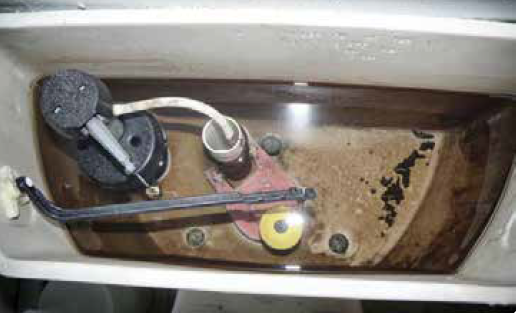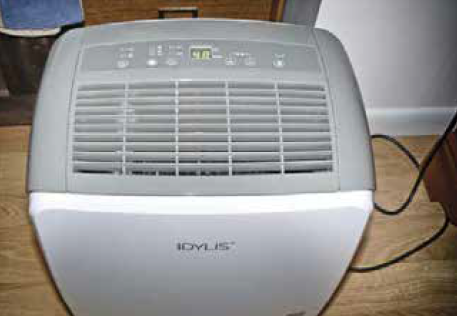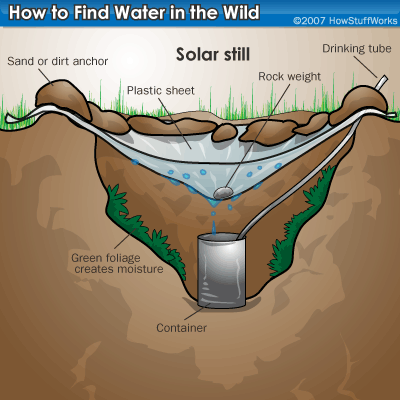Survival Tips To Get Water From Unusual Sources In Disaster Situations
What if the unthinkable has happened: The Earth is hit with an immense electromagentic pulse. Was it natural, or was it manmade? Who knows and, really, it doesn’t matter. Anything electrical is offline, including both municipal and private water pumps. With most people dependent on mechanical water systems, this could mean disaster. So, what do you do? We all need water to live. Granted, most cities and towns have backup generators, and so do some homeowners with private wells, but that will only keep the water going for so long. Eventually, the generators will stop working, because they will run out of fuel.

There will be a run on bottled water at every store that sells it, but that, too, will run out. That means all of us will have to start thinking outside the box and find alternative water sources. Thankfully, there are available alternative water sources. They are all around us in some of the most unlikely places. We just need to think logically. Some of these sources are pretty obvious; others, not so much. Most of these potential sources are available to both urban and rural dwellers. Keep in mind that you will need to filter and treat water from many of these sources before using it for consumption.
BE PREPARED TO FILTER AND TREAT WATER FROM MANY OF THESE SOURCES BEFORE USING IT FOR CONSUMPTION
Let’s take a look at a few. I’m sure you can come up with more.
Hot Water Tank:
Most people have a hot water tank in their home or apartment building. This is where heated water is stored so you can take showers, wash dishes, etc. My hot water tank holds about 120 liters of water. This one source can provide water for my family for days. The beauty is that it doesn’t need to be collected and stored—it is right there.
Toilet Tank:
The tank on the back of your toilet—not to be confused with the toilet bowl—holds up to 2 gallons of clean water. This is the very same water that comes out of your kitchen faucet. Drain this water directly from the tank and store it in water storage containers for later use.

Water Pipes:
There is always excess water in the piping. If you have a forced hot water heating system, those pipes are always full. There is a water drain valve right near your furnace. Go ahead and drain this water. The same can be said for standard water pipes. To drain the water from those pipes, locate the lowest point in your place (in my case, this is the basement; and that is where my washing machine is hooked up). Remove the washing machine hoses, and turn on the faucet. Water runs downhill, so most of the water still in the lines will run to this point. Collect as much water as you can. You can also try outdoor spigots, because they are usually lower than most interior faucets.
De-humidifier Reservoir:
Dehumidifiers pull moist air in and run it over cooling coils. The moisture in the air, which is a gas, runs across the coils, where the gas becomes a liquid: water. That water then drains into a catch reservoir. On some very humid summer days, I will dump a more than 10 liters of water collected in this manner into my garden. However, in an emergency scenario, put it into storage containers for later use instead of dumping it.

Air Conditioning Unit:
Air conditioners work very similarly to de-humidifiers. They take warm air and run it over cooling coils. The cooled air is then pumped into your home. Water droplets form on the coils and eventually run out the back of the air conditioning unit. Some of this water gets trapped within the unit, and although it might not be much, every little bit helps. You can also construct a collection tray and route the condensate to a container for future use.
Freezer:
Your power is off, and things start defrosting in your freezer. Any ice cubes you have are a ready source of water. As your freezer defrosts, water runs into a tray at the bottom. Under normal situations, the freezer will evaporate the water, but when the freezer is off, that water just collects in the tray. If you have an automatic icemaker in your refrigerator, there is bound to be water in the line that feeds it. Use it.
Swimming Pools:
A full, 12-foot-diameter swimming pool that’s 4 feet deep contains more than 12,000 liters of water. Take every available container you own to these pools and fill them up. This source will eventually run dry, as will all the others I have mentioned, but if you plan for it, you can be the first one there to take advantage of this water source.
Artificial Ponds:
It seems that every industrial park and business complex these days has a man-made pond of some sort. It might not be the best water around, but it is still water. In a disaster situation, you can’t be too picky. However, remember that this water can contain pesticides and fertilizers, so you might need to use it for purposes other than consumption.
Canned Food:
Look at the labels on canned food, especially canned fruit and vegetables. In most cases, they are packed in water; in the case of canned fruit, they are often packed in fruit juices. Not only do you have a water source, you have something to eat, as well.
Rain:
Don’t overlook the obvious; Everyone can collect rain. If it starts raining, get every available container out there. You can even set up rain barrels to collect the runoff from your roof and tarps, and plastic sheeting can be arranged to collect water over a balcony or yard. However, any rainwater that is collected will need to be filtered and treated before drinking.
Fresh Fruit:
Fresh fruit is a great source of water. If you don’t have access to fruit on your land, get to the grocery store. While you are stocking up on bottled water, stock up on fruit, as well. Use the fruit first, because water will keep, but the fruit won’t. Melons, peaches and pears are the best, because they have a high water content. Don’t overlook cucumbers, either.
Solar Still:
A survival lesson I learned while in the Army was how to set up a solar still. No matter where you are, you can get some water this way. Dig a hole 12 inches to 2 feet deep and 2 feet or more around. Place wet vegetation, such as seaweed, fresh cut grass, etc., in the hole (urine will work—as a last resort). Place an empty can or cup in the hole. Cover the hole with plastic (clear plastic works best), and secure the edges of the plastic with dirt and rocks. Place a small, round rock in the center of the plastic, right above the cup. The rock needs to be heavy enough to push the plastic down, but not
touching the cup. Now, let the sun do the work. The moisture in the hole will evaporate with the heating of the sun. As the water vapor rises, the plastic will trap it. When the temperature drops at night, the water vapor will turn back into liquid water and run to the depression made by the rock and then drip into the cup.

Wild Water:
Ponds, lakes, streams and rivers are great sources of water. Unless there is a drought, these sources will continuously give water.
Seeps:
I learned about seeps while I lived in Arizona. Even where there is no visible water, there is still water around. Look for vegetation such as cottonwood or willow trees—both are water-hungry plants. Even dry riverbeds will yield water, although most of it is underground. Find shady areas under rocky overhangs. Look for discolored soil, which is a sign of underground water fairly close to the surface. Listen carefully for the sound of dripping water near canyons, because this will indicate seeping water. How hard you will have to work for that water is anyone’s guess, but it is worth a shot.
WHAT TO DO WITH COLLECTED WATER
No water is safe, no matter where you collect it. This is especially true when it is collected from wild water sources or swimming pools. Water will stagnate very quickly, especially in the hot sun. Many of these water sources contain things that could make you very sick. For that reason, all collected water needs to be boiled, filtered or chemically treated. Pool water usually has very dangerous levels of chlorine, so let the water sit for a while before treating it and then drinking it. Once treated, store the water in containers approved for that purpose.
If a disaster-type scenario happens, it will change everything: No more long showers. No more going to the kitchen faucet to get a glass of water. We will be transported back 100 years. How we deal with this situation will dictate if we survive or not. I hope that it never happens, but you must be prepared in case it ever does.
Great tips. I learned a couple new water tricks... Thanks :)
You're always welcome my friend :)
Good list, keep on consolidating useful info like this!
Glad you liked it!
Great tips. I guess those will be handy soon, when Trump ignites a global nuclear war ;)
Let's hope it never comes to that. Always good to chat with like minded people though. Followed. DR
I am into a lot of this stuff too - been about 2 years now of my related Bushcraft and learning skills plus my related long time #OffGrid desires and info. I did not know you were interested in these things too!
TY for the support online, have a great Christmas and keep up the good work. Sincerely Barry
You're welcome mate. Merry Christmas to you too!
Followed and upvoted. Very nice article. I have a thread on survival tactics. I'm still new so not much yet. But check it out if you're interested. Thank you.
Always good to chat with like minded people. So I have added you to my Following. Thanks DR
Thank you. I followed you as well.
I appreciate it. I will have to check out your Blogs tomorrow. Thanks
Thank you. I will look though yours as well. It's always good to get some insight from a like minded person.
I agree. It's hard to keep focused when your friends and family think your nuts! Lol. So it is very good to chat with people who are awake.
Yea. My wife understands. I'm a veteran so I automatically get like unlimited crazy points. Lol. She just puts up with my crap. Haha. But yea. Alot of my friends think I'm a little out there. But I'm good with it. I'll be prepared when the time comes.
Yes I am also a Vet. But that's in the past. I was always a bit different. Even before my days of service I still was a bit nuts. Lol
Awesome Blog and some good learnings in there forsure. Thanks. Followed. DR